#hanfu references
Text
Some Hanfu pose references ..!
by yours truly,,, these photos honestly made me feel magical (& maybe worthy of being an inspiration) <33
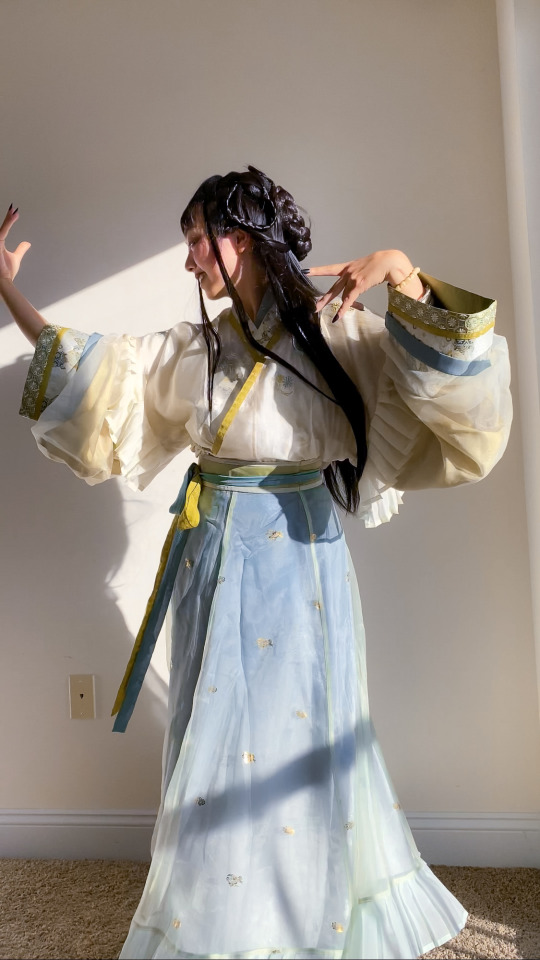
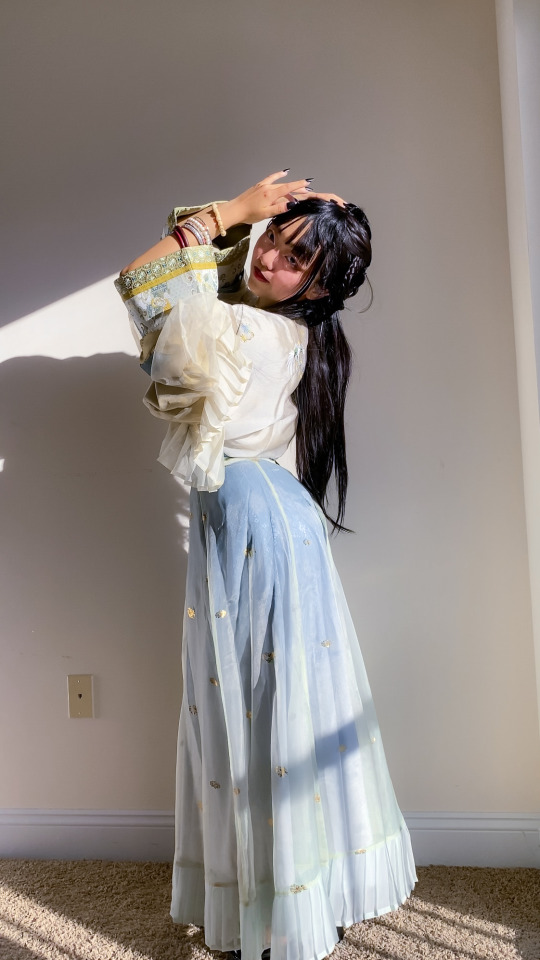
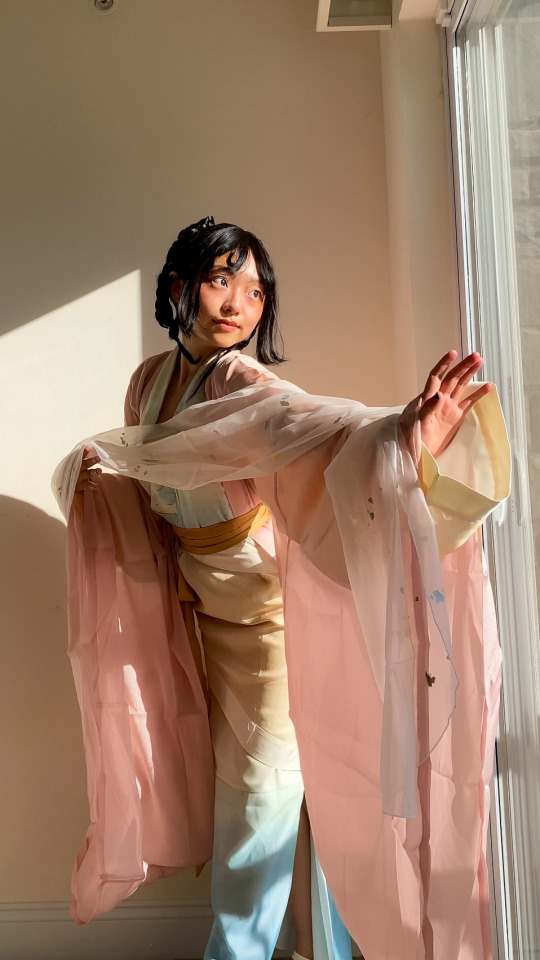
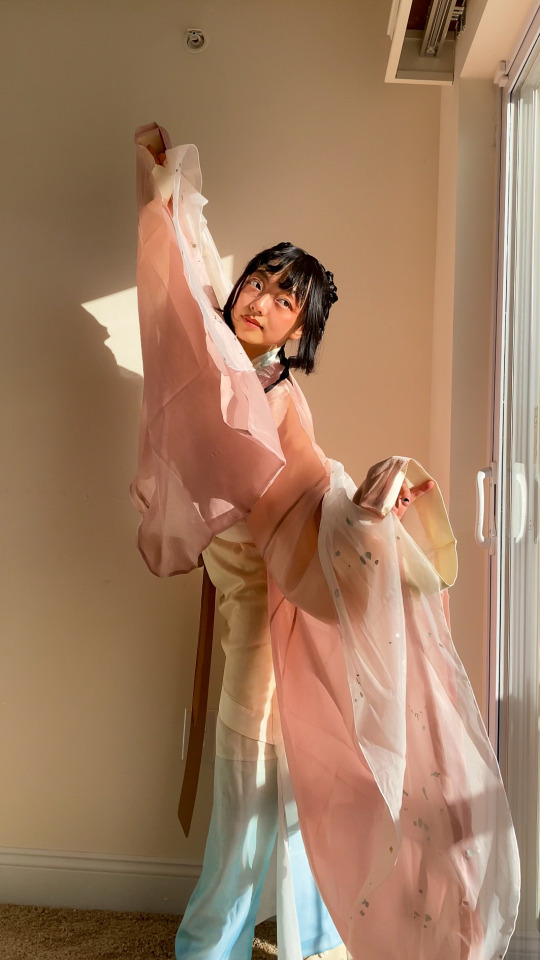
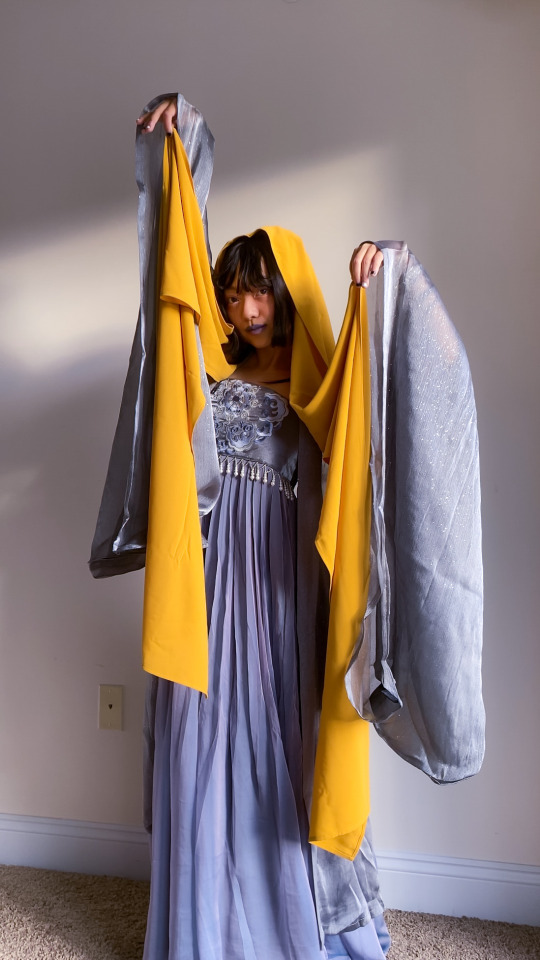



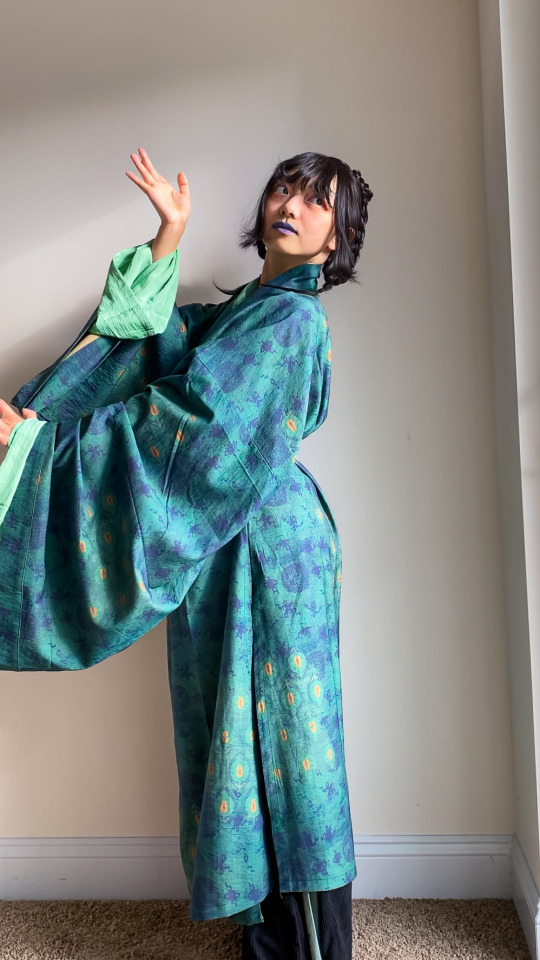
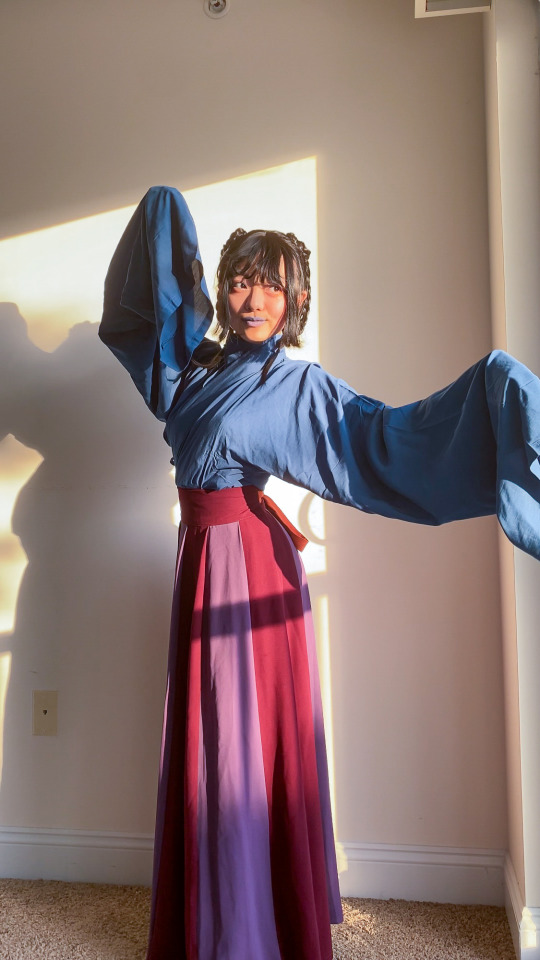
#chinese hanfu#hanfu fashion#汉服#hanfu#hanfu references#art reference#yovo does a face#your hanfu girl <3#traditional dress#chinese culture
206 notes
·
View notes
Note
Hi my friend wanted to ask about Chinese Opera and the red pom poms on their hats and their significance. I asked my mom and she said they were for decoration so I just wanted clarification
Hi! Thanks for the question, and sorry for taking ages to reply!
The pom poms you see on 盔头/kuitou (Chinese opera headdresses) are called 绒球/rongqiu (lit. "velvet ball"). They are often red, but can also be other colors, and vary in size. Ronqiu are decorative and serve to distinguish the many different types of kuitou from one another. Each type of kuitou is distinct in the number, size, and color of rongqiu that it's decorated with (of course, not all kuitou have rongqiu).
Below - a few different types of Beijing opera kuitou decorated with rongqiu (x):

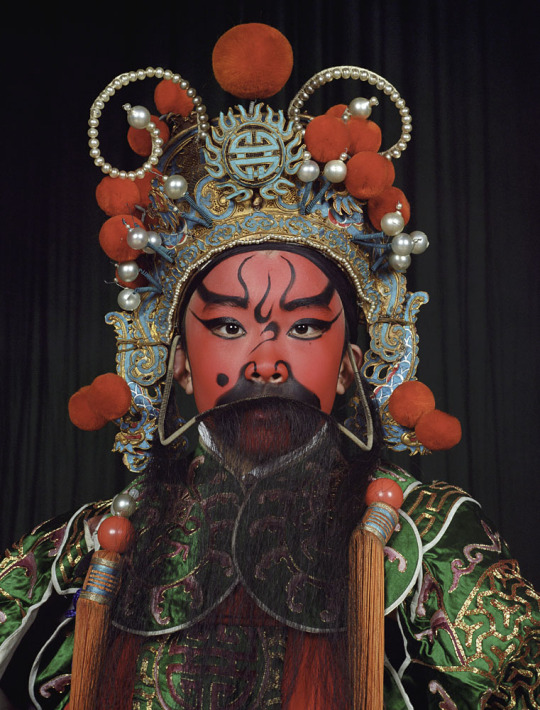
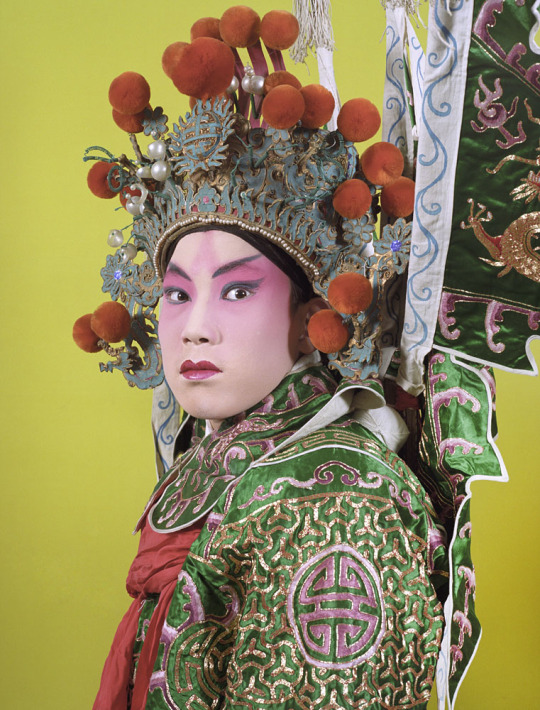
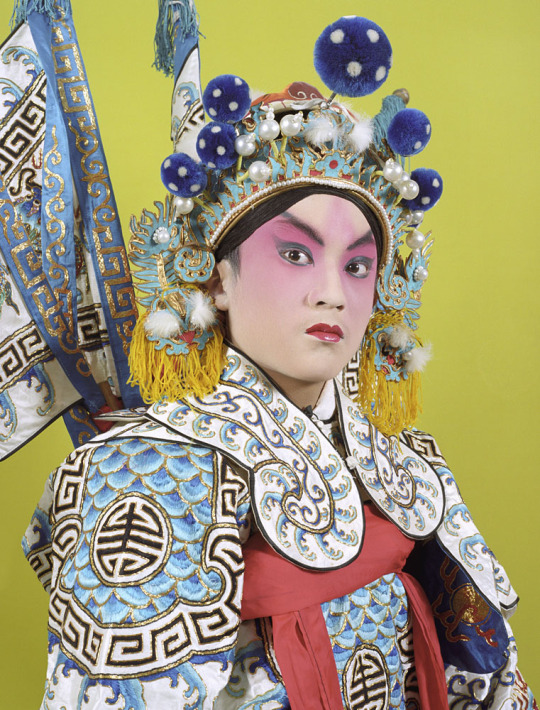

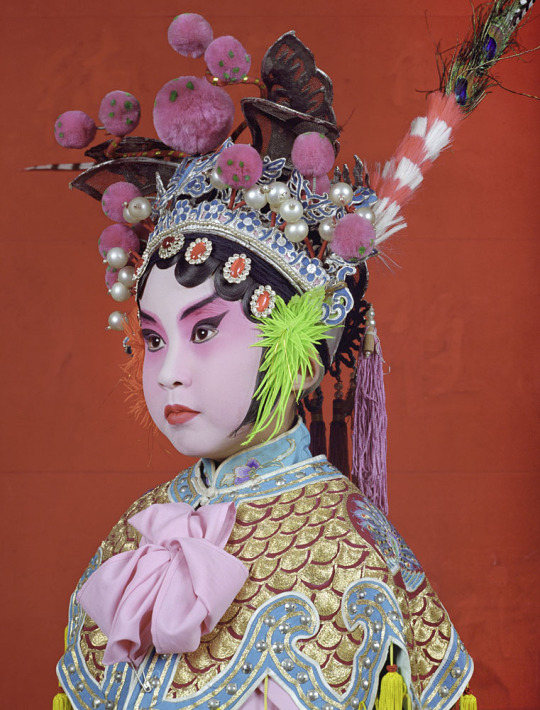
Rongqiu isn't used just for Chinese opera performances - it's a very common decorative item for Chinese headwear, especially for traditional/folk performances.
Below - examples of rongqiu use in folk custom/performance costumes, left to right: 1) 游神/youshen (wandering gods) procession in Fujian (x), 2) 英歌舞/yingge wu (yingge dance) performer in Guangdong (x), 3) & 4) 高跷/gaoqiao (stilt walking) performers in a 社火/shehuo parade in Gansu (x):

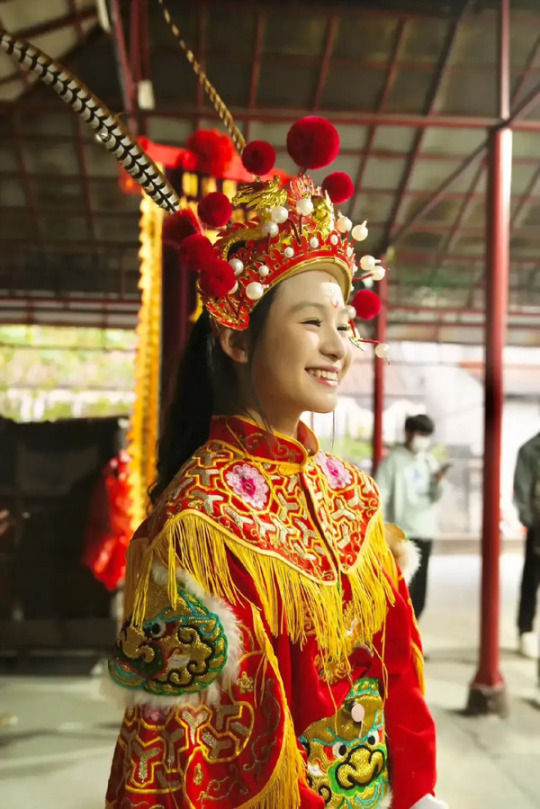

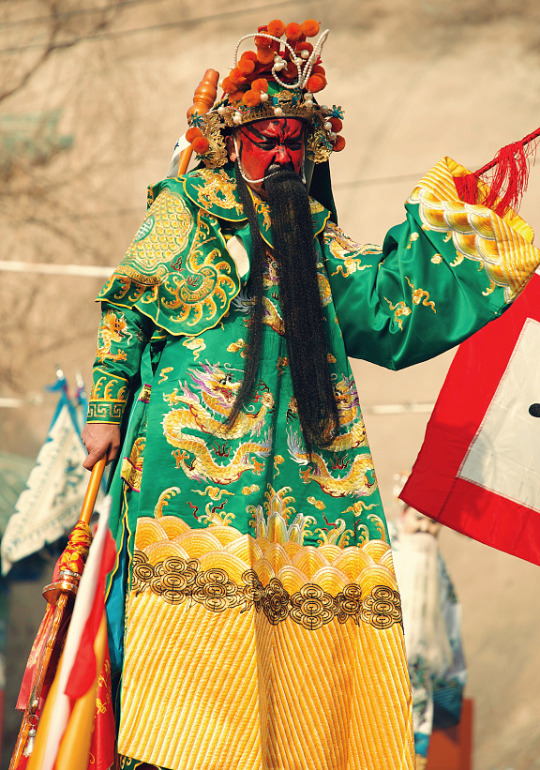
As a festive decoration, rongqiu was also widely used on bridal guan (crowns) from the Qing dynasty into the modern day.
Below - examples of rongqiu use in historical bridal guan: Left - a bride during the late Qing dynasty, circa 1890 (x); Right - a bride during the Republican era/minguo, in 1939 (x):
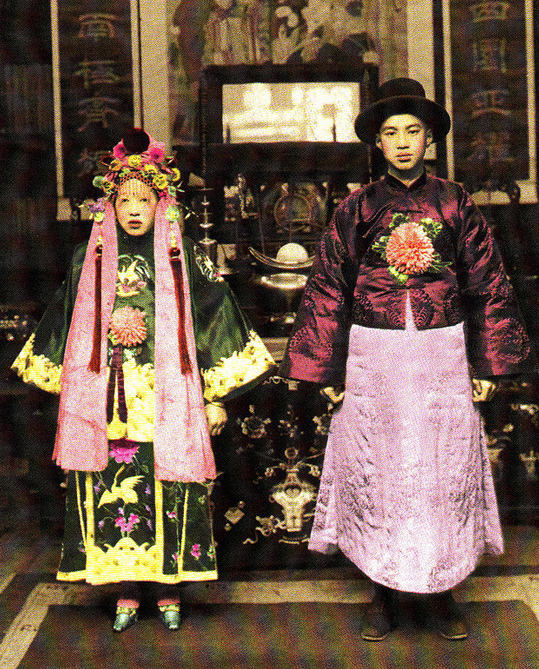
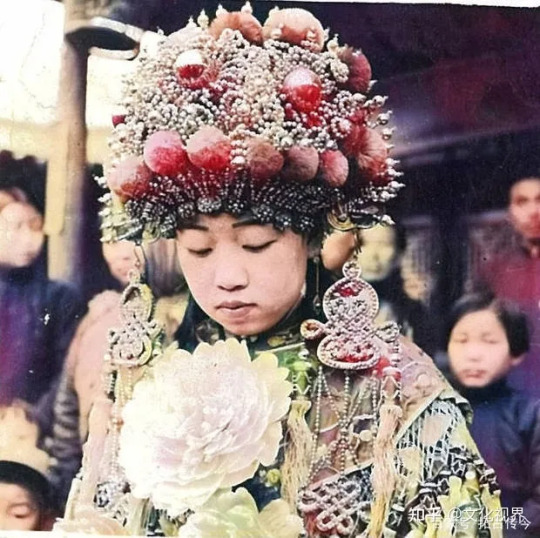
For some reason it's been extremely difficult to find sources on the origin of rongqiu that would shed more light on its significance, but based on historical paintings the use of rongqiu as a head ornament may have originated in the Qing dynasty. During the late Qing dynasty, it was fashionable among women to wear rongqiu on the sides of their hair, as can be seen in the paintings below (x):

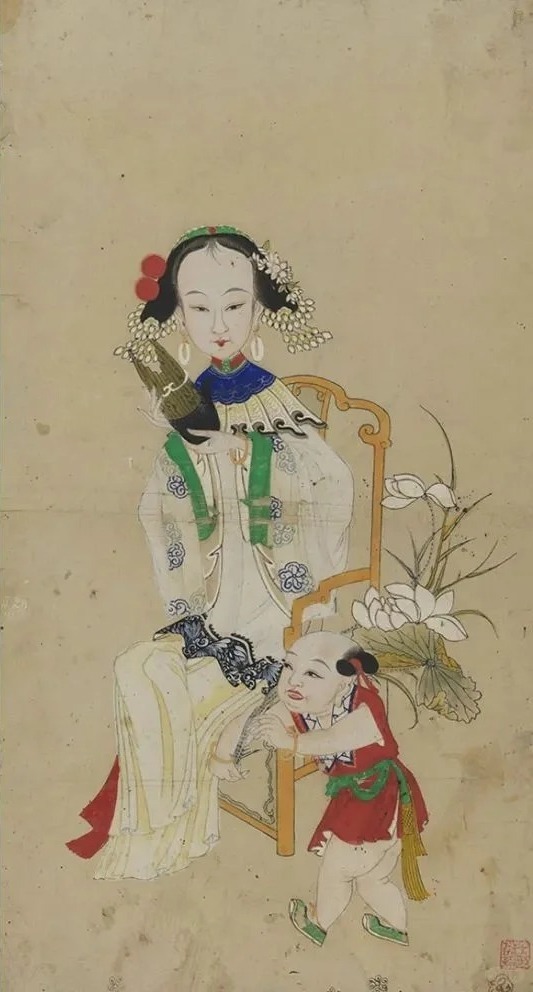
This particular style of rongqiu hair ornament was depicted in the 2012 historical cdrama 娘心计/Mother's Scheme:
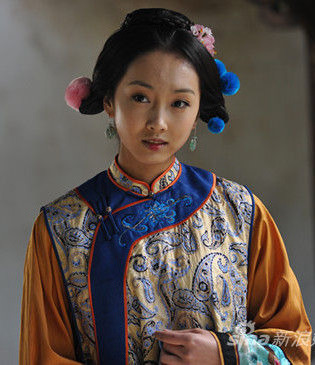
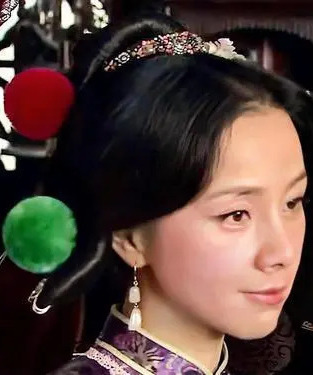
For more references, please see my rongqiu and kuitou tags.
If anyone has more information on the significance of rongqiu, please do share!
Hope this helps ^^
#rongqiu#pompoms#kuitou#chinese opera#opera costume#xifu#hanfu#history#reference#ask#reply#junpeicindystories#chinese fashion#chinese clothing#china
505 notes
·
View notes
Text

A-Qing, the little fox.
#better drawn mdzs#mdzs#a-qing#I needed to draw her happy one last time#i also really wanted to try my hand at drawing Hanfu. Clothing is still hard for me but I learned a lot!#the process was 1) get idea from the fox hairpin extra 2) thumbnail 3) look up references 4) accept that this is nearly an impossible task#5) do it anyways. For A-Qing#It has also been a while since the last better drawn mdzs. I've been getting better! B*)#I chickened out of having this be a ‘draw this in your style’ prompt….Perhaps in the future!#I want to improve a little more first I think. Psychically beaming my beloved mutuals to re-kick off DTIYS in my stead#I adore how A-Qing is associated with foxes! She is cleaver and quick to adapt! A trickster in many regards!#There is absolutely more to analyze here but I'm not well versed about Chinese mythology
1K notes
·
View notes
Text

I'm joining Art Fight this year!
On top of that I got challenged some time ago to make an original character so I figured I ought to make a proper reference sheet for her.
Everyone, please meet Jiang Yingjuan - my first ever OC! 🙏
#artfight 2023#team vampire#original character#oc art#reference sheet#hanfu#character design#character concept
198 notes
·
View notes
Text

Kakagai in hanfu. I just think they're neat
#Kakashi hatake#maito gai#kakagai#naruto#these aren't like period accurate hanfu or anything#I just like the references I usedi don't think they're even from the same time period
2K notes
·
View notes
Text

The Mirage Saloon proprietress Primadonna, and her trusted employee, Ms Rose
#sonic#amy rose#rouge the bat#sah au#thats- my queue~!#bart (bale art)#i wanted to incorporate more 1880s western styles on rouge but i think she'd wear more traditionally western wear in her outlaw fits#i do think this ms rose is a nice balance of old victorian fashion and hanfu tho so! win or me there#the only reference to old western fashion choices on Rouge are the ruffles on the side of the qipao and i was thinking maaaybe a-#dress bustle but ultimately decided not to include it. less is more for this looke imo#lemme stop rambling abt my notes fr i sound like a dweeb who likes 2 look at clothes bye#oh one more thing theres a red and blue on this canvas but i want to give them a more casual bar look to fit with primadonna n ms rose#so youll have 2 wait on that
148 notes
·
View notes
Text

Niè parents!
(Individual drawings bellow the cut)

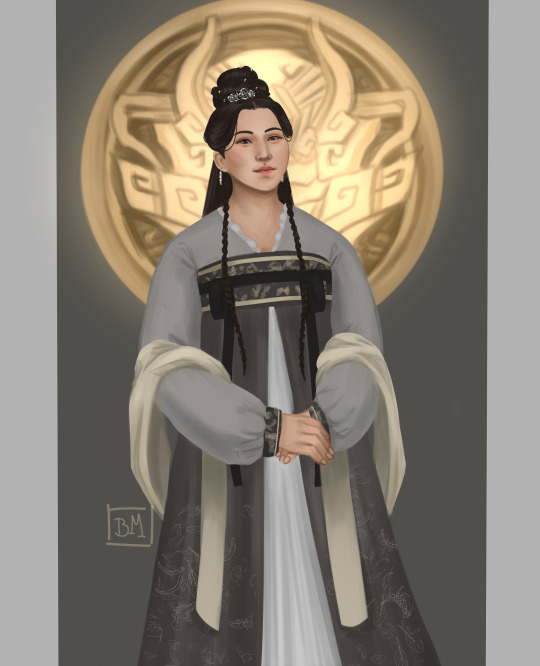

#i've been meaning to post them here for a while now but i never knew if i should post them individually or not#anyway i just had to give them faces#my references for their clothes was mostly from what people wore in cql#but also a few modern hanfu and one or two historically accurate models for the second nie mom#cql fanart#mdzs fanart#nie parents#qinghe nie#i don't think i should tag nmj and nhs since they're not in the picture but i think i will just because they don't really have names#nie huaisang#nie mingjue#nie family
223 notes
·
View notes
Text

that scene where Chu Wanning is drying Mo Ran’s hair, and Mo Ran forgets where he is
#ranwan#erha#2ha#mo ran#chu wanning#erha he ta de bai mao shizun#the husky and his white cat shizun#fanart#artsyfartsy#sketch#sketchbook#daily sketch#this was meant to be a quick sketch while i catch up bcos im behind#instead i had to take reference photos of myself to figure out how bodies work#and also research what hanfu inner robes should vaguely look like#spent WAY too much time LOL#anyway i’m very much enjoying erha
27 notes
·
View notes
Photo
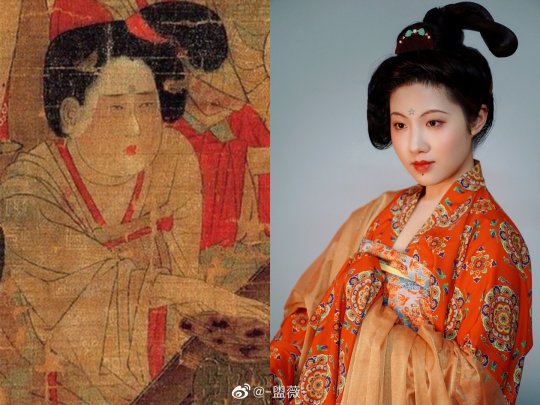
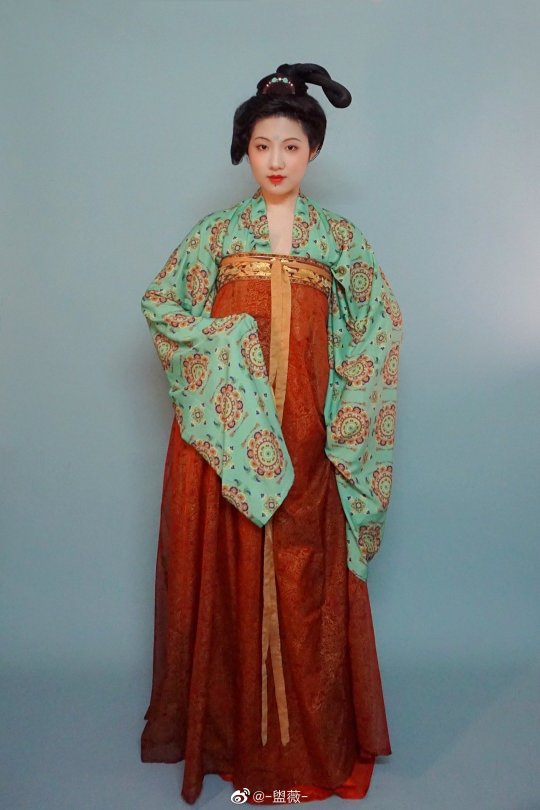

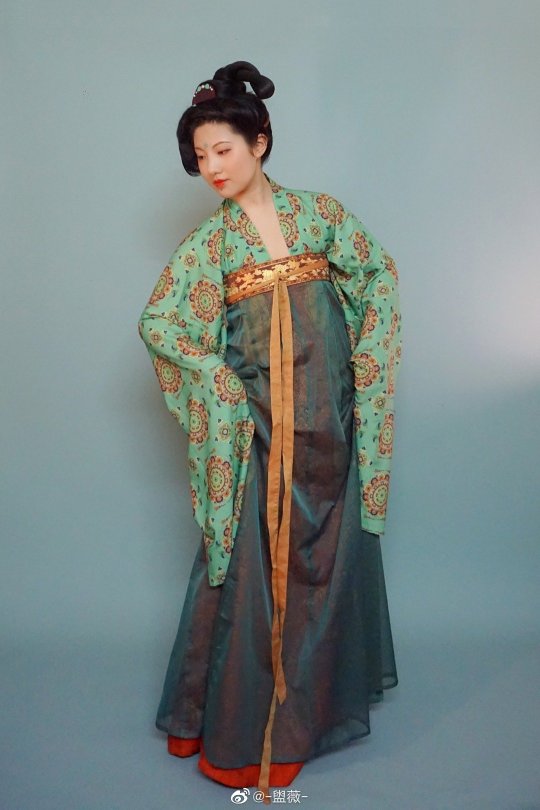
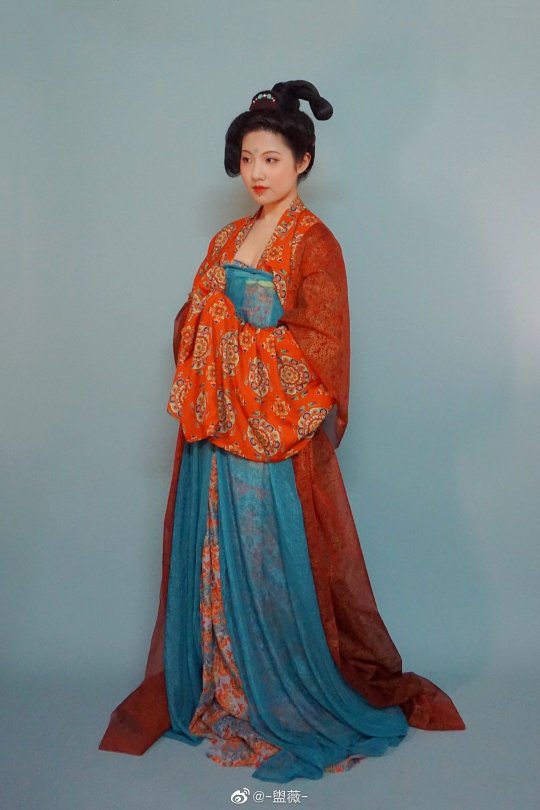

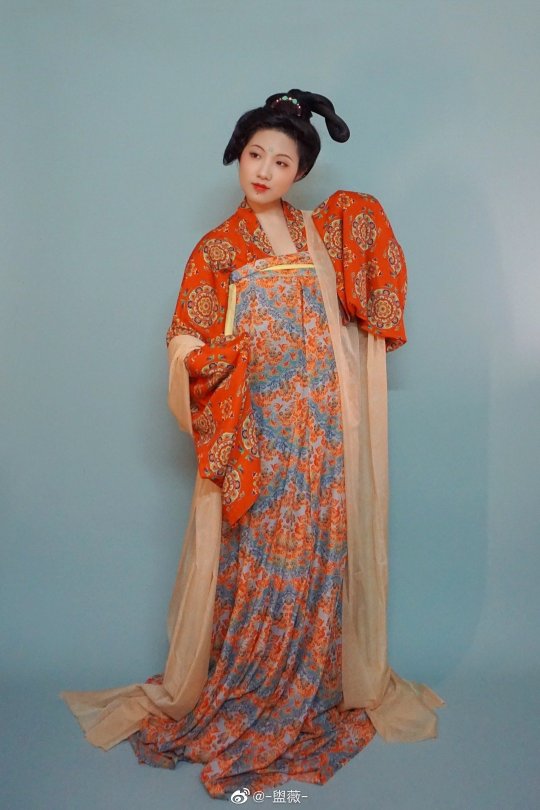
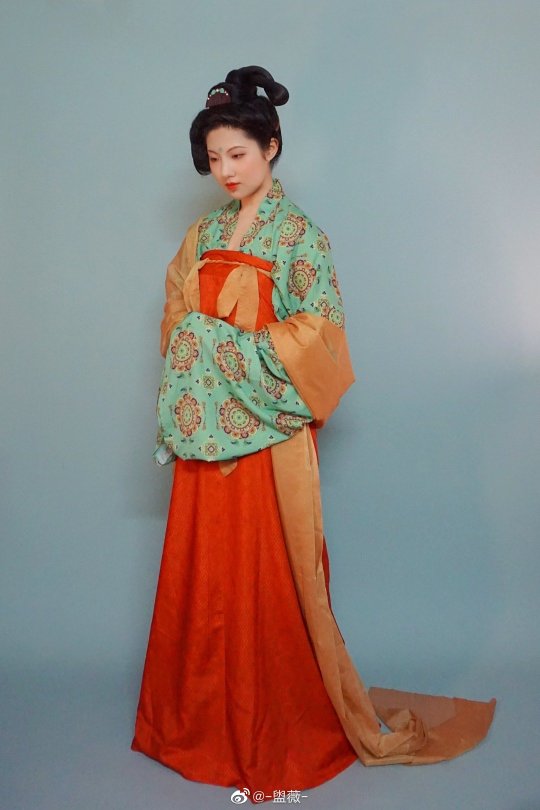

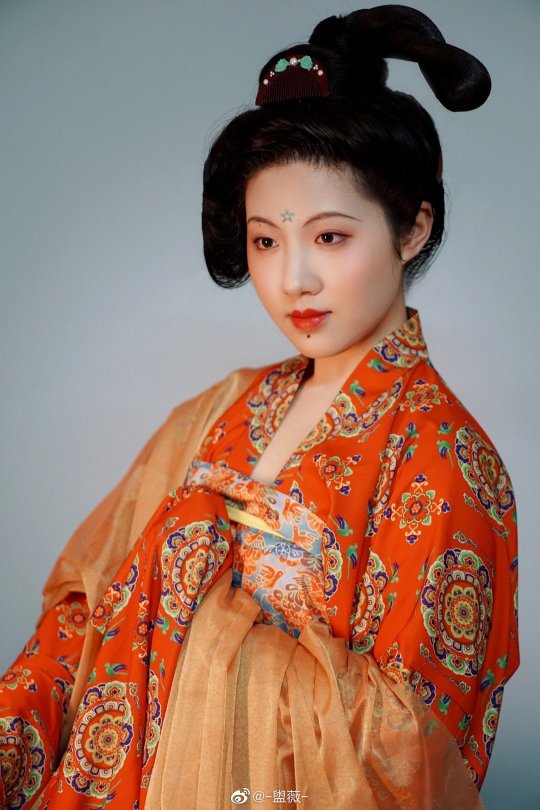


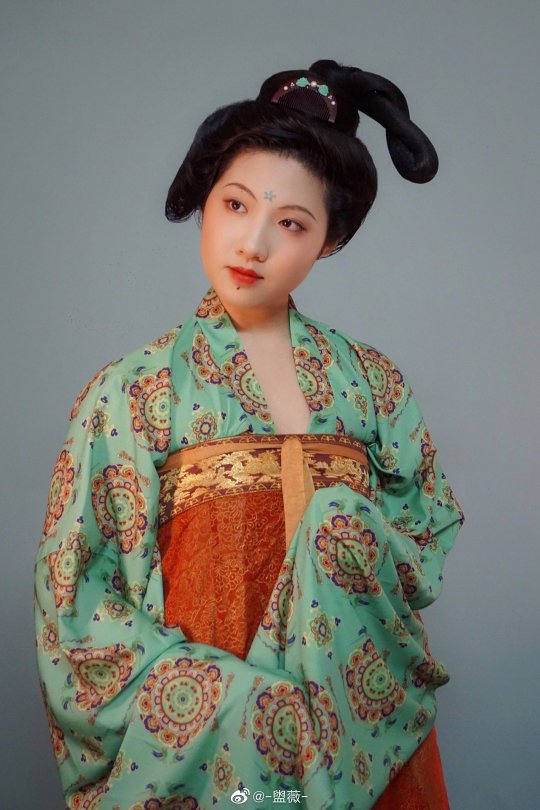
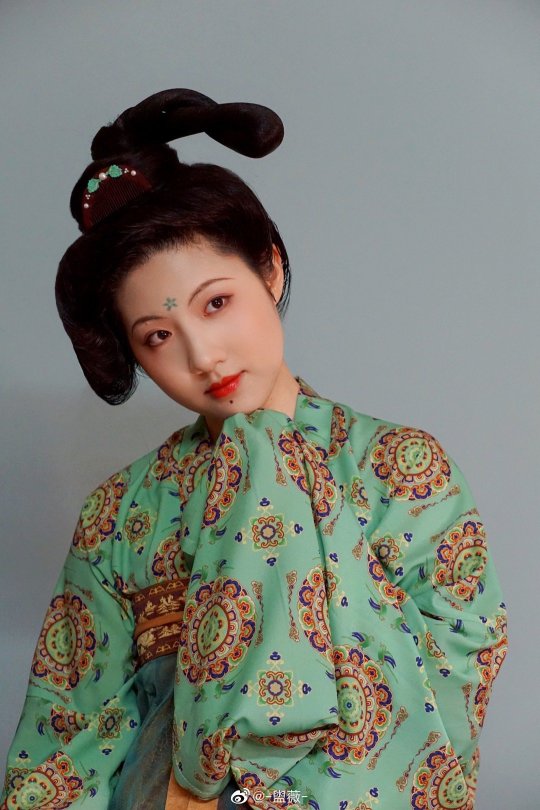
[Hanfu · 漢服]Chinese Tang Dynasty(618-906 A.D)Traditional Clothing Photoshoot
【About Hairstyle “堕马髻 [duò mǎ jì]”】
During the Tang Dynasty, Li Shan(李善) quoted "record of the Customs/《风俗通》" recorded : “‘堕马髻者,侧在一边’,......始自梁冀所为,京师翁然皆效之”。
( “堕马髻 [duò mǎ jì]” is a hairstyle with a side hair bun. It was created by Liang Ji's family and later imitated by the people in the capital.)
The characteristic of this hairstyle is that the hair hangs sideways to the shoulders, and a lock of hair is separated from the bun to scatter freely. If combine with “啼妆(Makeup that make people look like they are crying)” and “愁眉(sad looking brows)“, it will look like a woman who has just fallen from a horse, which can increase a woman's sense of charm.
The“堕马髻 [duò mǎ jì]”appeared again during the Tianbao era(742–756) of the Tang Dynasty, and became popular during the Zhenyuan period(785–805) of the Tang Dynasty. In the Tang Dynasty, some people described the shape of roses hanging down and petals gently touch the ground, like the hairstyle “堕马髻 [duò mǎ jì]”. “堕马髻 [duò mǎ jì]”has slightly changed from generation to generation, but its basic characteristics, the sideways and inverted shapes, have not changed. “堕马髻 [duò mǎ jì]” is mainly favored by married middle-aged women.
-----
“堕马髻 [duò mǎ jì]” hairstyle originated in the Han Dynasty, during the Han Dynasty, "《后汉书∙卷六十四∙列传第二十四∙梁冀》" recorded:
“寿色美而善为妖态,作愁眉,啼妆,堕马髻,折腰步,齲齿笑,以为媚惑。冀亦改易舆服之制,作平上軿车,埤帻,狭冠,折上巾,拥身扇,狐尾单衣。寿性钳忌,能制御冀,冀甚宠惮之。”
Translation:
Liang Ji(梁冀)'s wife Sun Shou(孙寿) is very beautiful and good at being "bewitching”. She make “愁眉(sad looking brows)“,“啼妆(Makeup that make people look like they are crying)”,as shown below:
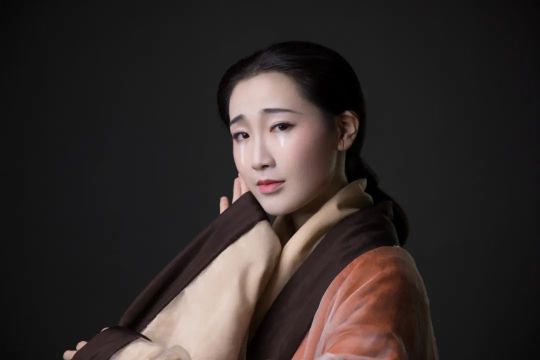
“堕马髻(comb your hair bun on one side)” ,”折腰步(refers to swinging the waist when walking)”, as shown below:
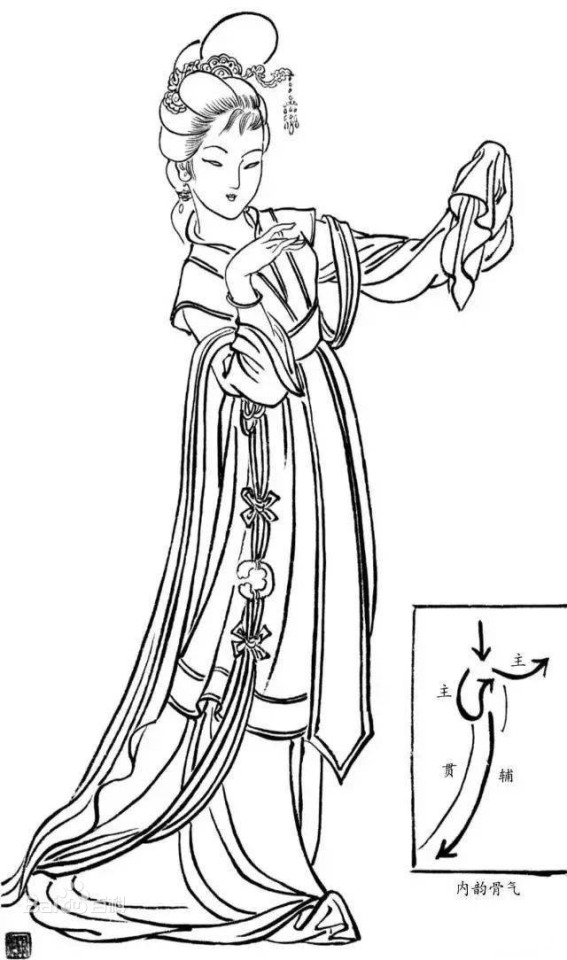
“龋齿笑(Refers to a woman's intentionally contrived smile that looks like a toothache, although is very happy inside, woman don’t laugh out loud)”, she thinking these makeup & action that will make her very cute and to attract men.
Sun Shou is jealousy because she can subdue his husband Liang Ji. Liang Ji dotes on her very much, but is also afraid of her.Sun Shou's actions and the makeup she created were deeply loved by women in the imperial city of the Han Dynasty at that time, and they imitated her. And this trend gradually spread to other cities.
which has record in 《搜神记∙卷六∙梁冀妻》:
“汉桓帝元嘉中,京都妇女作“愁眉”“啼妆”“堕马髻”“折腰步”“龋齿笑。”“愁眉”者,细而曲折。“啼七”者,薄拭目下若啼处。“堕马髻”者,作一边。“折腰步”者,足不在下体。“龋齿笑”者,若齿痛,乐不欣欣。始自大将军梁冀妻孙寿所为,京都翕然,诸夏效之。天戒若曰:“兵马将往收捕:妇女忧愁,踧眉啼哭;吏卒掣顿,折其腰脊,令髻邪倾;虽强语笑,无复气味也。”
But these trend is actually portending a tragic end.
天戒若曰:“兵马将往收捕:妇女忧愁,踧眉啼哭;吏卒掣顿,折其腰脊,令髻邪倾;虽强语笑,无复气味也。”
Translation:
Heaven warned: "The army will come to arrest, the women are sad, frowning and crying; the officials and jailers push and kick, break their waists and spines, and make their hair buns tilt; even if they are forced to talk and laugh, they will no longer have that mood."
In the second year of Yanxi(159 AD), the whole clan and family of Liang Ji's was exterminated.
In Chinese history, it is not difficult to found that when a kind of makeup or fashion that tends to show"sad”,“crying" etc,and becomes popular among women. In many cases,It heralds the imminent demise of a dynasty.
Just like the "Blood Halo Makeup/血晕妆" in the late Tang era and popular in the Han, Tang and Southern Song Dynasty brows makeup “愁眉(sad looking brows)“.When these makeups appeared, the empire also getting weakened.
Therefore, Chinese literati and scholars of in history criticized these fashion/trend, and believed that it was a sign of the collapse of the country.
————————
📸Recreation Work & 🧚🏻♀️Model: @-盥薇-
👗Hanfu:@青泠谷汉服工作室
🛍️Hanfu:https://item.taobao.com/item.htm?spm=a1z10.3-c.w4002-21304955845.18.1b7ccf3ekxddWc&id=703584063035 & https://item.taobao.com/item.htm?spm=a1z10.3-c.w4002-21304955845.20.1b7ccf3ekxddWc&id=703118697215
Comb: @江琛复古生活馆
🔗Weibo:https://weibo.com/3942003133/MvrSj620J
————————
#Chinese Hanfu#Tang Dynasty(618-906 A.D)#Han Dynasty#chinese traditional clothing#chinese historical hairstyle#chinese historical fashion#hanfu history#Chinese history#chinese#chinese culture#堕马髻 [duò mǎ jì]#啼妆(Makeup that make people look like they are crying)#愁眉(sad looking brows)#折腰步(refers to swinging the waist when walking)#龋齿笑(Refers to a woman's intentionally contrived smile that looks like a toothache although is very happy inside woman don’t laugh out loud)#Liang Ji(梁冀)#Sun Shou(孙寿)#-盥薇-#青泠谷汉服工作室#江琛复古生活馆#齊胸衫裙 qixiong shanqun#pibo 披帛
162 notes
·
View notes
Text
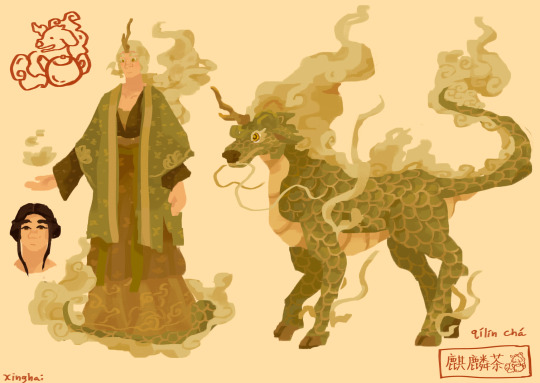
Finally finished Juhua’s reference!
#qilin#Juhua#chrysanthemum#hanfu#tried to make their clothing and human hairstyle based on tang dynasty hanfu and outfits#big credit to ziseviolet for their. any wonderful references on hanfu#their many**#artists on tumblr#ocs#original character
69 notes
·
View notes
Text
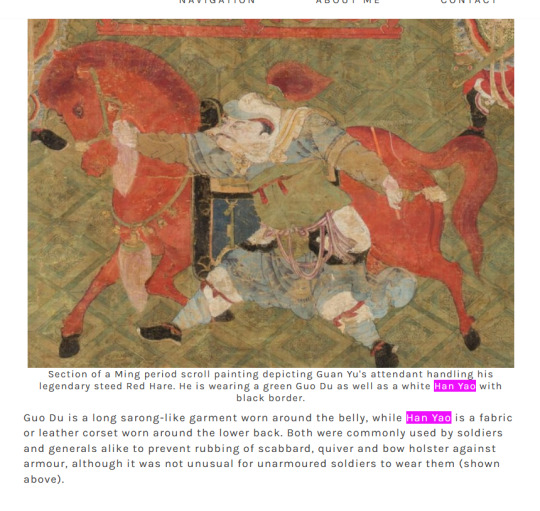
Section of a Ming period scroll painting depicting Guan Yu's attendant handling his legendary steed Red Hare. He is wearing a green Guo Du as well as a white Han Yao with black border.
Guo Du is a long sarong-like garment worn around the belly, while Han Yao is a fabric or leather corset worn around the lower back. Both were commonly used by soldiers and generals alike to prevent rubbing of scabbard, quiver and bow holster against armour, although it was not unusual for unarmoured soldiers to wear them (shown above).
Source.
//Putting this here as a reference, as I always wondered what was that corset-like waistguard I see on soldiers and sometimes bandits and other kung fu outfits in some wuxia films. I always thought they were neat and if they had a function besides guarding the waist.

So what would be the deep purple garment worn by a yellow sash in this above picture is likely the guo du?? Did I draw it incorrectly? Though I've seen it described as the 'waist cushion' in English too, as seen below:

Though I think the Han Yao is the 'waist cushion' here?
Istg Chinese clothing history is an entire 4-year university course ;_; I wouldn't mind being given corrections and suggestions from the Chinese side of Tumblr.
#look when you're drawing someone you better know what you're drawing#nevermind the Main Story takes place in the Qing dynasty where Rui wouldn't be allowed to keep his long hair and hanfu#he styles himself as a Water Margin-esque bandit#and proud of coming from the Ming Dynasty (despite knowing near to nothing about it)#[About Ruixiong]#history#reference
42 notes
·
View notes
Text
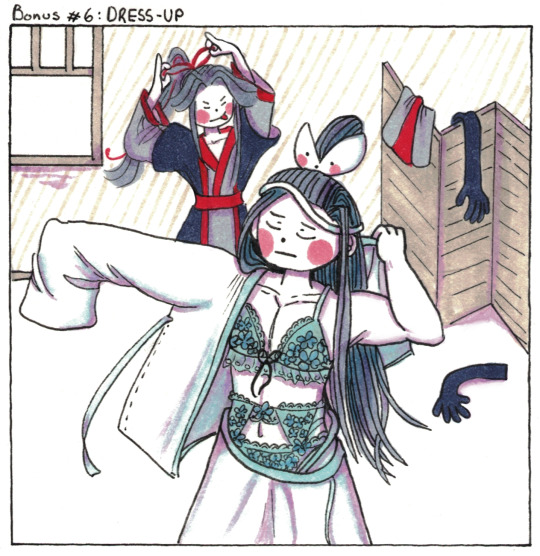
Bonus 6: Dress-up
[First] Prev <–-> Next
#better drawn mdzs#mdzs#bonus comic#lan wangji#wei wuxian#Its the dawn of a new arc! Which means a new day! And new outfits for our duo as chosen by all of you!#Bte; mxtx never said lwj *wasn't* wearing lingerie under his hanfu the entire time so....#It makes him feel confident! And he enjoys it! AND he looks good in it.#wwx has NOT yet noticed. He keeps looking away to give lwj privacy while he changes. This is slightly devastating to lwj#at the end of the day he's wearing it for himself but he would like to be acknowledged.#I had a blast drawing this one! Lots of reference searching but I find that part kind of fun too.#I originally was going to have references to all the outfit options but oh man it got cluttered.#I did NOT trust myself to colour in the floor. My markers are getting dry & i wasn't sure about colours.#Thank you all for support with the polls! And for all the very sweet fan art and outfit propaganda!#This one is for all the people who wanted to vote for bikini lwj. Blows you a kiss (platonic).
860 notes
·
View notes
Text


Zoe but she's just like Maomao fr
#zoe#mk zoe#mortal kombat zoe#mk oc#self insert#maomao#mortal kombat#mortal kombat 11#mk11#the apothecary diaries#reference#chinese hanfu#hanfu#artist on tumblr#digital art#my art#doodle#oc art#chibi
23 notes
·
View notes
Text
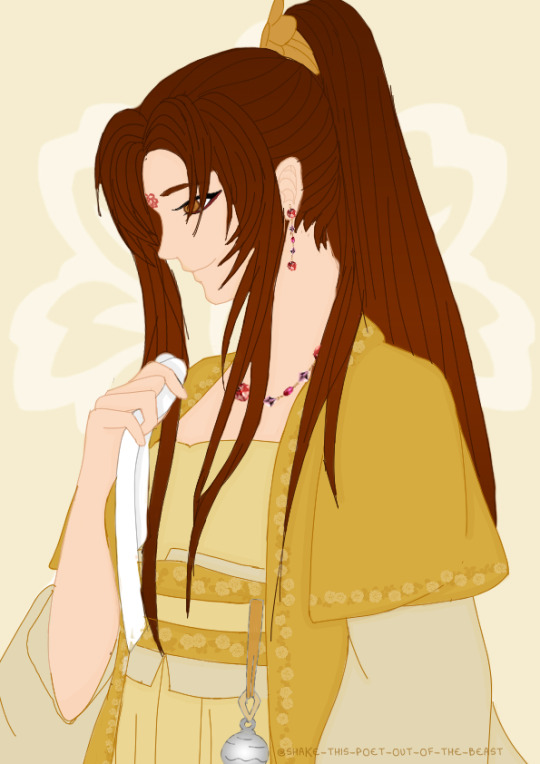
Young Mistress Jin
Not been happy with my art lately but this took forever so here have a fem JL
#mxtx#danmei#fanart#mo xiang tong xiu#mdzs#mo dao zu shi#mdzs fandom#mxtx mdzs#mdzs juniors#jin ling#young mistress jin#princess of lanling#fem version#fem jin ling#was it just a reason to find pretty hanfu references?#maybe#princess jin ling
20 notes
·
View notes
Photo
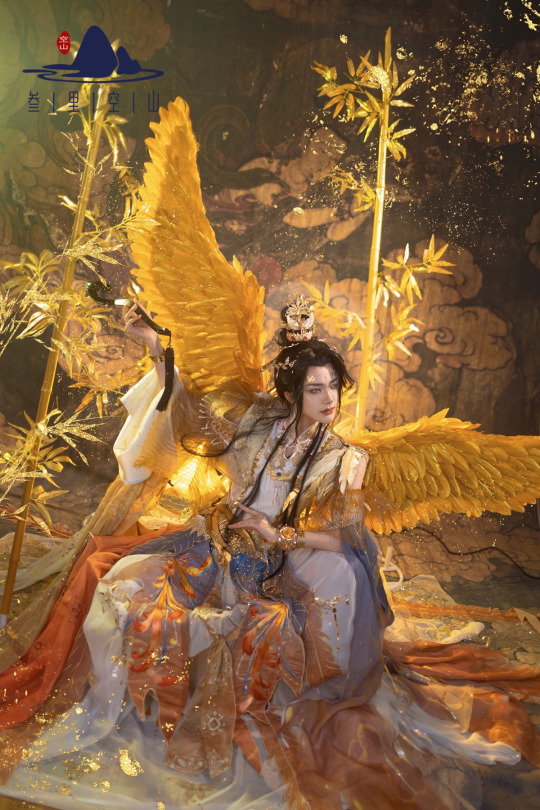

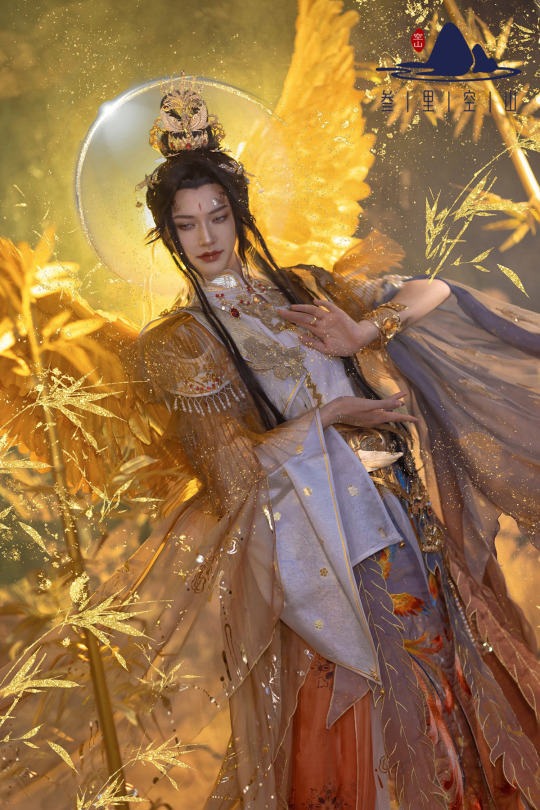
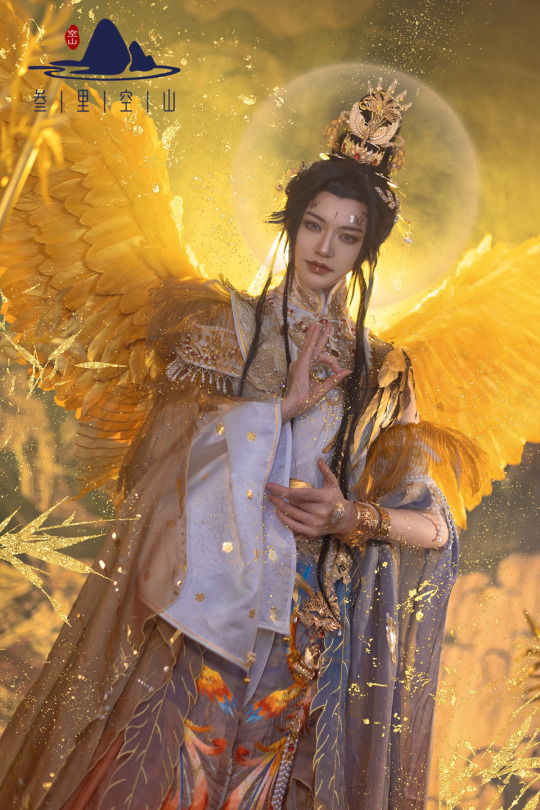
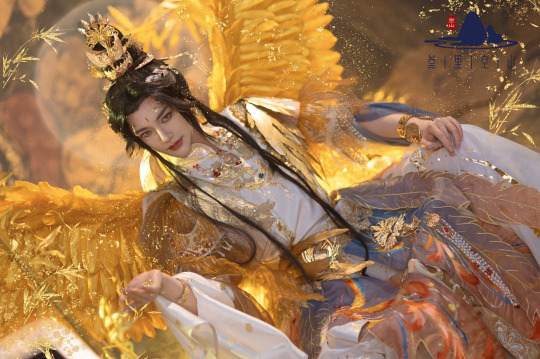
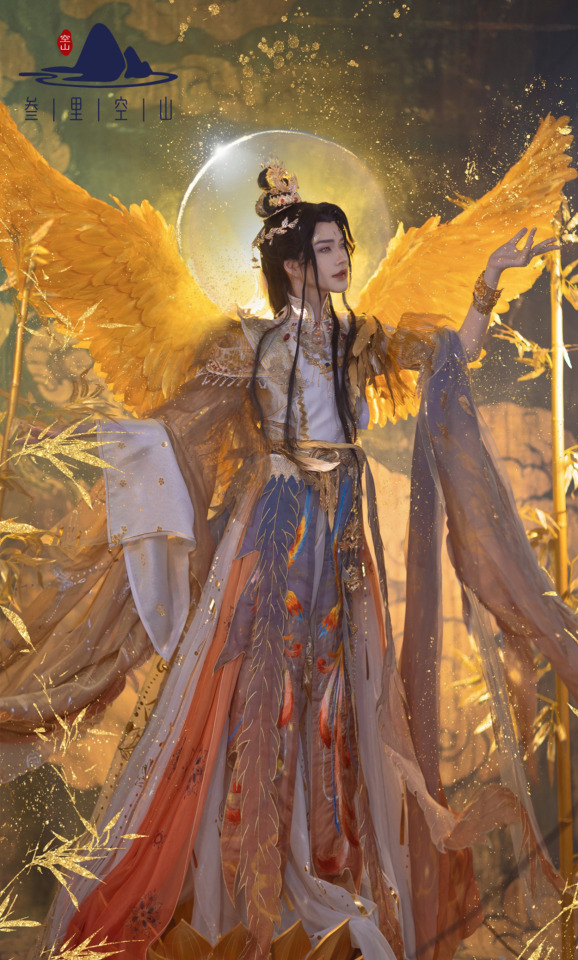



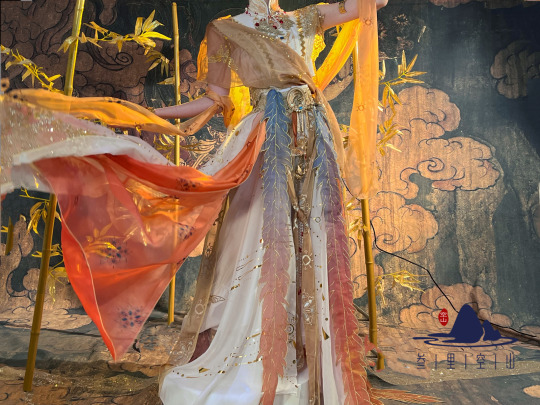
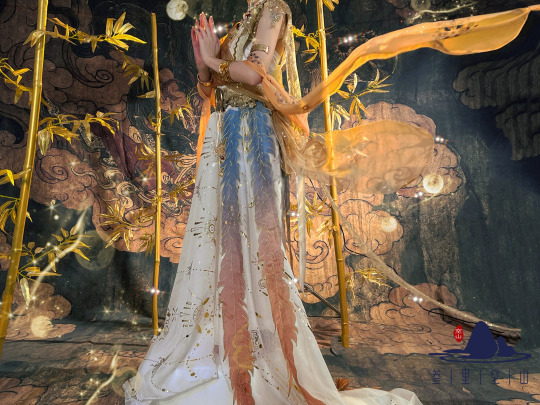
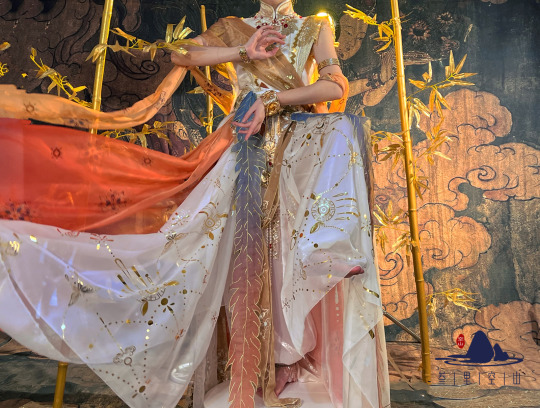
chinese fashion by 三里空山
#china#hanfu#fashion#chinese fashion#reference: 凤凰明王 Phoenix Vidyarāja in Lantern: Reflection of the Peach Blossoms by Huaishang
399 notes
·
View notes
Photo

Minghuatang’s 2022 new mamianqun design - Flying eagle stealing treasure 雕翱窃宝
#minghuatang#hanfu#mamainqun#probably refers to the dior appropriation incident#雕diao#couple with rabbit kicking the eagle#which is another reference
75 notes
·
View notes